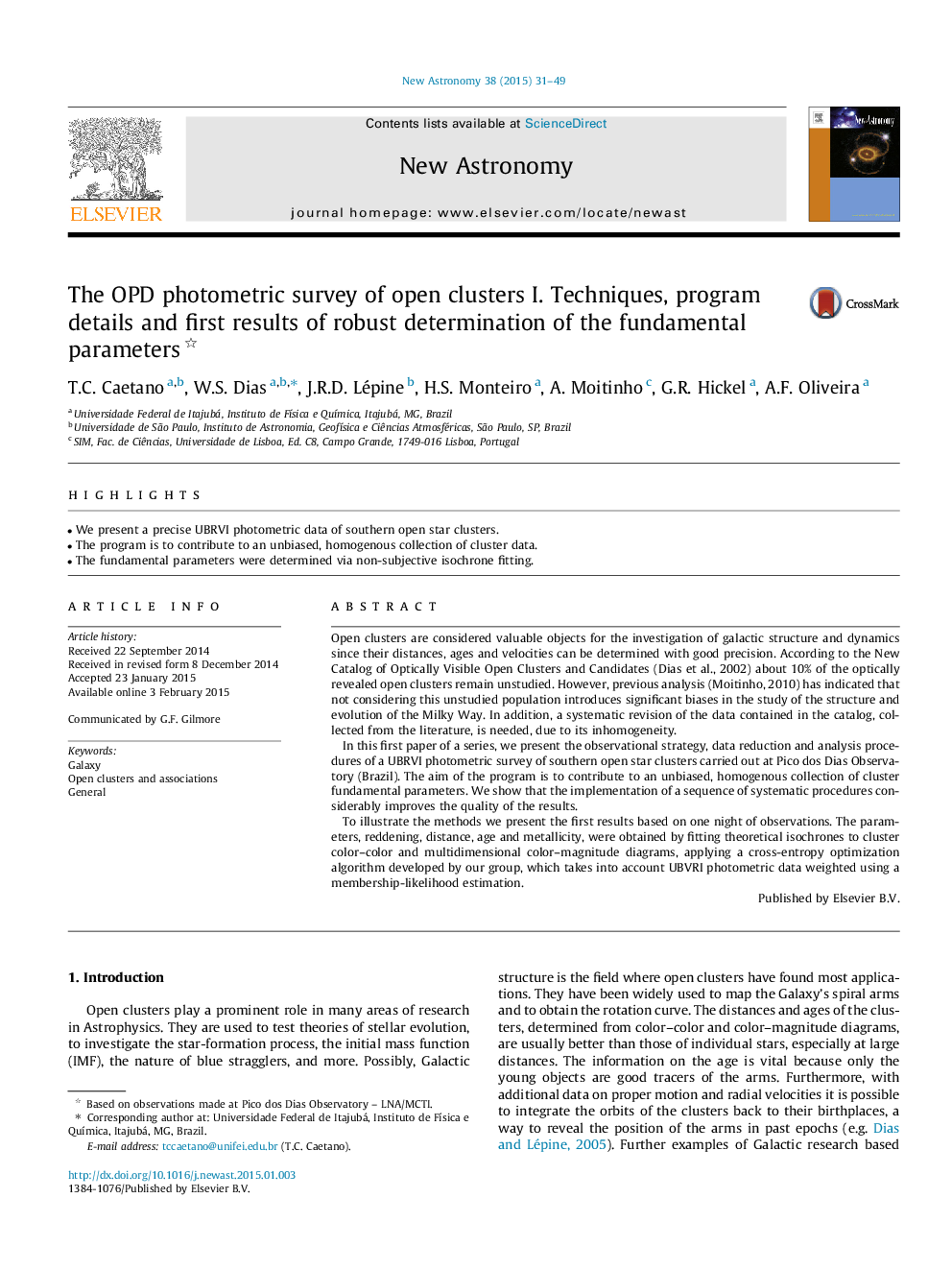| Article ID | Journal | Published Year | Pages | File Type |
|---|---|---|---|---|
| 1778913 | New Astronomy | 2015 | 19 Pages |
•We present a precise UBRVI photometric data of southern open star clusters.•The program is to contribute to an unbiased, homogenous collection of cluster data.•The fundamental parameters were determined via non-subjective isochrone fitting.
Open clusters are considered valuable objects for the investigation of galactic structure and dynamics since their distances, ages and velocities can be determined with good precision. According to the New Catalog of Optically Visible Open Clusters and Candidates (Dias et al., 2002) about 10% of the optically revealed open clusters remain unstudied. However, previous analysis (Moitinho, 2010) has indicated that not considering this unstudied population introduces significant biases in the study of the structure and evolution of the Milky Way. In addition, a systematic revision of the data contained in the catalog, collected from the literature, is needed, due to its inhomogeneity.In this first paper of a series, we present the observational strategy, data reduction and analysis procedures of a UBRVI photometric survey of southern open star clusters carried out at Pico dos Dias Observatory (Brazil). The aim of the program is to contribute to an unbiased, homogenous collection of cluster fundamental parameters. We show that the implementation of a sequence of systematic procedures considerably improves the quality of the results.To illustrate the methods we present the first results based on one night of observations. The parameters, reddening, distance, age and metallicity, were obtained by fitting theoretical isochrones to cluster color–color and multidimensional color–magnitude diagrams, applying a cross-entropy optimization algorithm developed by our group, which takes into account UBVRI photometric data weighted using a membership-likelihood estimation.
